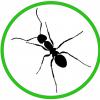I've seen somewhere a foamcrete recipe of 1 part cement 5 parts perlite, as perlite is mold resistant and holds water and cement would not be toxic. Anyone tried this?
A similar approach with plaster and perlite, but as plaster is not mold resistant it seems to defeat the purpose.
Proper foamcrete mix with proper foamcrete mixing machine - would just be too expensive.
Any other ideas?
Cheers
Edited by ricardoflup, September 6 2021 - 7:44 AM.


















